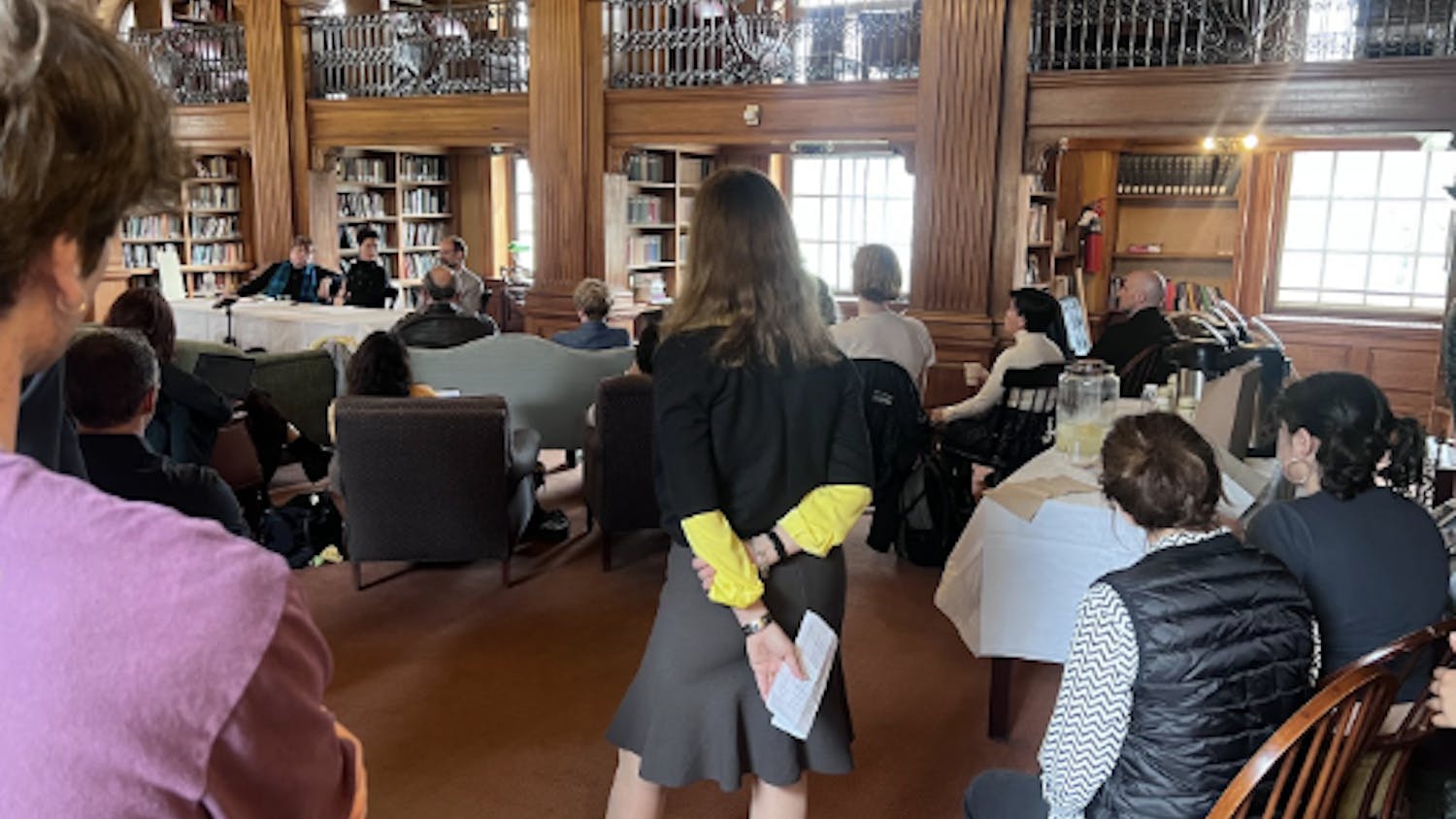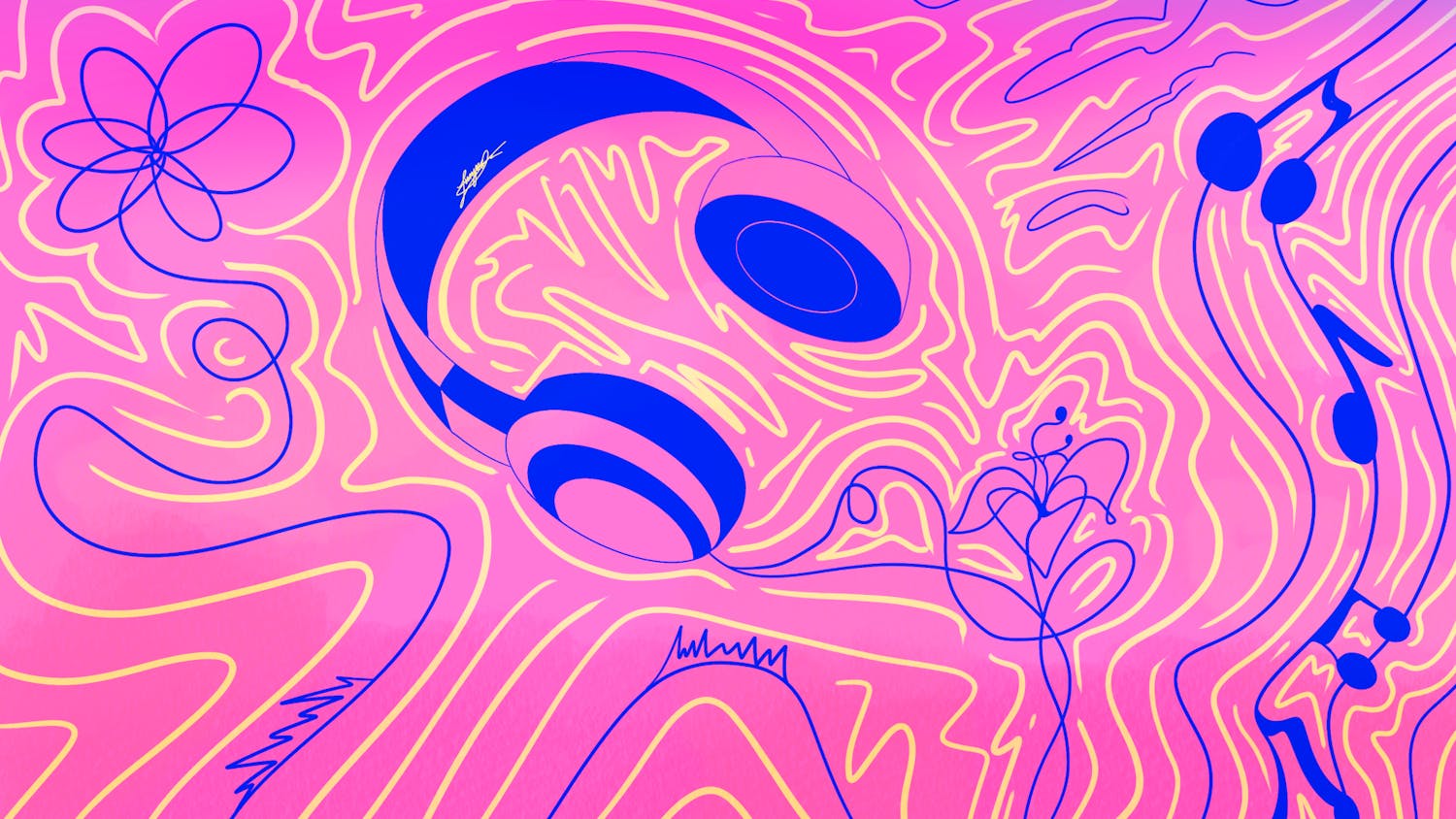From pianos programmed to play themselves to a jazz band's wild improvisation, Tuesday night's Festival of New Music, held in Spaulding Auditorium, delivered original sounds from electronic and computer-based composers.
Electro-acoustic music has a surprisingly long history, beginning in 1759 with Jean-Baptiste de La Borde's invention of the Clavecin Electrique, which according to Joel Chadabe, author of "Electric Sound," was a "sort of keyboard-controlled carillon in which suspended bells were struck by clappers charged with static electricity." The first major electric musical instrument of the 20th century was the Telharmonium, a large keyboard instrument invented to broadcast music via telephone lines. Throughout the first part of the 20th Century, composers such as Ottorino Respighi and George Antheil introduced new sounds and technologies into their compositions, from the recorded songs of nightingales to airplane engines.
However, it was the composer John Cage who first consistently applied electrical technology to music. Cage pioneered concepts such as algorithmic compositions, in which he used random numbers to make compositional decisions. In 1937 Cage said, "I believe that the use of noise to make music will continue and increase until we reach a music produced through the aid of electrical instruments which will make available for musical purposes any and all sounds."
Many of the composers performing at the Festival of New Music have backgrounds in computer science or mathematics. They continue Cage's inquiry into the application of mathematics and electrical technology to music.
And if Cage defined the problem, then the Festival of New Music revealed some modern-day solutions. Two composers were particularly deft in integrating technology and music making: George Lewis and Kimo Johnson.
George Lewis, a world-renowned trombonist and composer, performed three compositions. Members of the Barbary Coast Jazz Ensemble performed the first two, "Shadowgraph 4" and "Smashing Clusters." As a conductor, or as he put it, "coordinator," Lewis brought his unique and energetic approach to music to both performances.
"George Lewis' compositions open everything up. Instead of being responsible for a component of the rhythm or harmony, he strips everything down to what sounds and energy you have to offer to a collection of performers. He had everyone in the band stretching their idea of what they could do with their instrument, and themselves. Then he would take that and improvise with all of us as conductor, like one big instrument. It was a great experience, and a very different experience than playing conventional big-band music," explained Nick Stein '02, a percussionist for the Barbary Coast.
The result of Lewis' influence was a rich, vital music unlike any other. Lewis' third piece, "Voyager," was an interactive computer music composition in which the computer functioned not as a musical instrument but as an improviser that controlled a virtual orchestra. Lewis, on the trombone, played seamlessly with the computer, again producing a fresh sound that illuminated perfectly the way in which humanity uses and depends on technology.
Earlier in the evening, Kimo Johnson's "Multistage" performance on guitar was accompanied by pre-recorded pieces chosen by a computer. The pre-recorded pieces consisted of two groups: past performances of Johnson on the guitar and ambient recordings of the audience at those performances. The composition became a musical collage, and Johnson said of the song, "This piece celebrates being a musician, not through a display of virtuosity on stage, but by bringing together all the types of music the musician plays."
Written in a language called Super Collider, the computer program used in "Multistage" had the freedom to choose any of the pre-determined sounds. Johnson, by way of a footswitch, told the computer to choose and play a sound, and as the computer played the sound, Johnson mimicked with his playing. The musical sensation was haunting and subtle, similar to that of a duet.
While wildly different in approach, all the composers and musicians who performed in the Festival revealed their ability to make fresh music using electronic and computer-based technology. The Festival of New Music was truly an event at Dartmouth that will be hard to replicate, even with the aid of technology.



